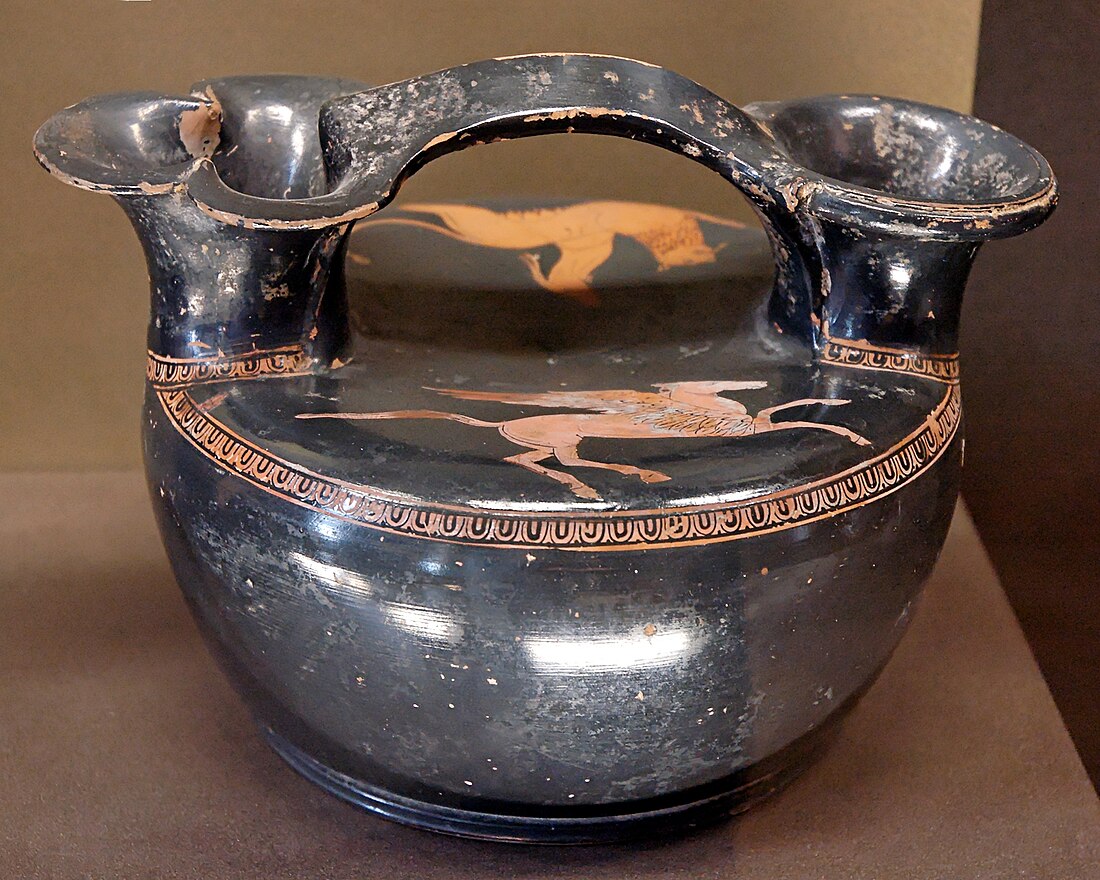Top Qs
Timeline
Chat
Perspective
Askos (pottery vessel)
Ancient Greek pottery vessel From Wikipedia, the free encyclopedia
Remove ads
Askos (Ancient Greek: ἀσκός "tube"; plural: ἀσκοί - askoi) is the name given in modern terminology to a type of ancient Greek pottery vessel[1] used to pour small quantities of liquids such as oil. It is recognisable from its flat shape and a spout at one or both ends that could also be used as a handle. They were usually painted decoratively like vases and were mainly used for storing oil and refilling oil lamps.
This article needs additional citations for verification. (February 2009) |


These were extensively traded in and around the Mediterranean. An example of this is UC47602 in the Petrie Museum's collection, which is a Black Glazed vessel with an almost metallic appearance and was originally produced in Greece (the main production was in Attica), Etruria, and was excavated in Memphis.
The original meaning of ἀσκός is wineskin. The early Christian sect of the Ascitae takes its name from them. The Ascodrugitae, however, are unrelated except in a folk etymology.[2]
Remove ads
References
External links
Wikiwand - on
Seamless Wikipedia browsing. On steroids.
Remove ads
